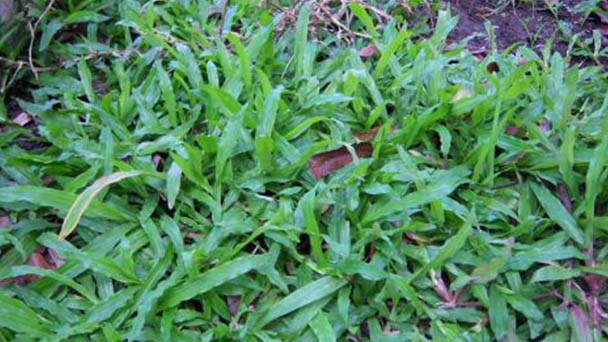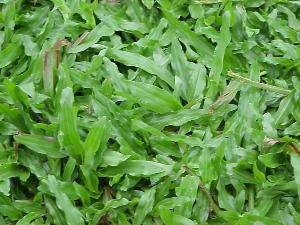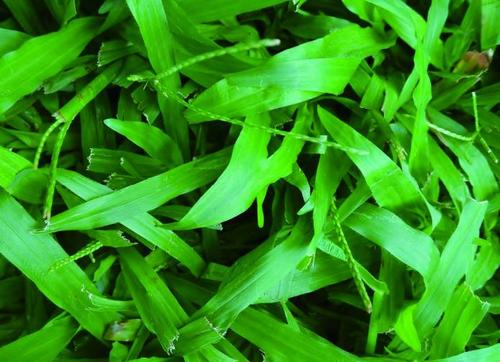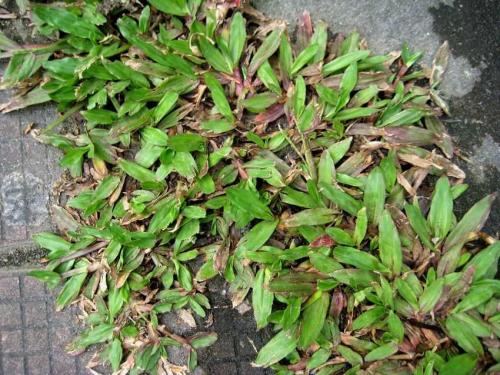Broadleaf carpet grass (Axonopus compressus) profile
Written by Maggie
Mar 15 2021

Broadleaf carpet grass (Axonopus compressus) is a perennial herb of the Gramineae family .Introduced from South America to the south of China for cultivation in the early stage, it has now evolved into native grass species and grows in the warm places of tropical and subtropical regions. Broadleaf carpet carpet thrives along many creeks and small rivers in the south where the water table is high. Broadleaf carpet grass likes to be wet, but will not grow well on swamps and soil that seeps for most of the year. The grass is also tolerant of infertility and is found in barren uplands along the coast. Broadleaf carpet grass is highly acid resistant and the optimum pH is 4.5?5. 5. Because of the acid tolerance and poor soil environment, it is often used for soil and water conservation on slopes or roadsides.
Broadleaf carpet grass picture

Morphological characteristics of broadleaf carpet grass
Broadleaf carpet grass is a perennial grass with long stolons. Culms are 15 -- 40cm tall, compressed, nodes often grayish white pilose; Leaves are broadly oblate, pliant, apically obtuse, culm, 10--25cm long and 6 -- 10mm wide, shorter on stolons; Leaf sheaths are loose, compressed, dorsal ridged, glabrous; Ligule is short, membranous, 5mm long, glabrous. Racemes are usually 3, uppermost 2 in pairs, 4--7cm long; Spikelets are oblong lanceolate, 2.2 -- 2.5 mm long, sparsely filiform, containing 2 florets, first glume emarginate, second glume slightly shorter than florets, palea of fruity florets sclined leathery, elliptic to oblong, ca. 1.7mm long, apex sparsely puberulent.
The ecological habits of broadleaf carpet grass
Broadleaf carpet grass is distributed in 27° north and south latitude range, like humid tropical and subtropical climate, annual rainfall is required to be more than 775mm, not frost resistance; broadleaf carpet grass is suitable for growing on wet sandy soil, not tolerant to early, dry season dormancy; Nor is it resistant to flooding. Broadleaf carpet grass is shade-resistant, grows well in rubber forests and other similar shading conditions. As well as Elephantopus tomeet osus, Elephantopus is commonly found in the margins of rubber forests, along with grass such as Paspalum conjugatum, Cyrtococcum Patens, Microstegium gratum, Chrysopogon acicula-tus and Elephantopus tomeet osus. The fire can still survive, but should not be repeated burning grass.It grows rapidly when conditions are suitable and can spread quickly by roots and underground stems. Seed yield is not high, but the seed life is strong, at 20-35°C and wet conditions, the germination rate can be as high as 60%, seedlings grow well, encroachment is strong. Lizi 1000-seed weight 0.2-0.22g.
The spread of Broadleaf carpet grass
Broadleaf carpet grass is native to the southern United States, Mexico and Brazil. It is widely distributed in tropical and subtropical regions of the world, especially in West Africa, South Africa, India, the Philippines, Indonesia, Australia and the Pacific Islands. Danzhou, Changjiang, Hainan Province, China.Baisha, Qiongzhong, Qionghai, Dunchang, Chengmai, Wenchang, Lingao and other areas are common, in the open grassland, open forest and roadside, especially under the rubber forest margin.

Broadleaf carpet garden use
Broadleaf carpet grass is mainly used in lawn and ground cover, such as garden, sports ground, solid soil and carpet.
Broadleaf carpet grass is an excellent soil cementing plant material for slope protection in South China. It is widely used in green Spaces. Broadleaf carpet grass is commonly used in Guangzhou to lay lawns and mix with other grass species to build activity sites. Broadleaf carpet grass is understood that this grass is rough in Sichuan, but it is more tolerant to trampling and shade, and can only be used as a resting lawn in Chengdu.
Growing broadleaf carpet grass
Plant Broadleaf carpet grass seeds after the remaining spring frost. Prepare the soil so that it is unfastened however company and smooth. For most soils, you’ll want to until and then drag or roll to company and easy the surface. Sow the seeds at the charge of two kilos per 1,000 rectangular ft (1 kg. per ninety three sq. m.). Rake gently after sowing to assist cowl the seeds. Keep the soil continuously moist for the first two weeks, and water weekly for an extra six to eight weeks. Ten weeks after planting, the seedlings ought to be installed and opened to spread. At this point, water at the first signs and symptoms of drought stress. Broadleaf carpet grass will develop in soils except a lot of nitrogen, however making use of a garden fertilizer will hasten establishment.

Latest Updated
- Benefits of Bugleweed - 7 Science-backed Health Benefits
- Bugleweed Dangers & Side Effects - Is It Poisonous?
- How to Plant Evergreen Trees - What You Should Know
- When to Plant Evergreens - Grow Guide for Evergreen Trees
- 12 Wonderful Evergreen Shrubs for Your Garden
- 12 Popular Evergreen Plants with Pictures for Beginners
- When And How To Prune A Lilac Bush Like a Pro
- How to Grow & Care for Lilac Vine (Hardenbergia Violacea)
- Japanese Lilac Tree (Syringa Reticulata) Care & Propagation Guide
- Shumard Oak Pros and Cons - What to Know
Popular Articles
- Winter maintenance of Antirrhinum Majus
- How to Grow Terminalia Mantaly Tree
- How to Grow and Care for Crossostephium Chinense
- How to grow Antirrhinum Majus in spring
- Peristeria Elata (Dove Orchid) Profile: Info & Care Guide
- Underwatered Snake Plant (Sansevieria Trifasciata) - Signs And How To Fix
- How to Care for Brazilian Jasmine Plant (Mandevilla Sanderi)
- How to Grow & Care for Graptopetalum Purple Delight in Summer
- Rosa Chinensis (China Rose): Plant Growing & Care Tips
- How to Care for Baby Sun Rose (Aptenia Cordifolia)